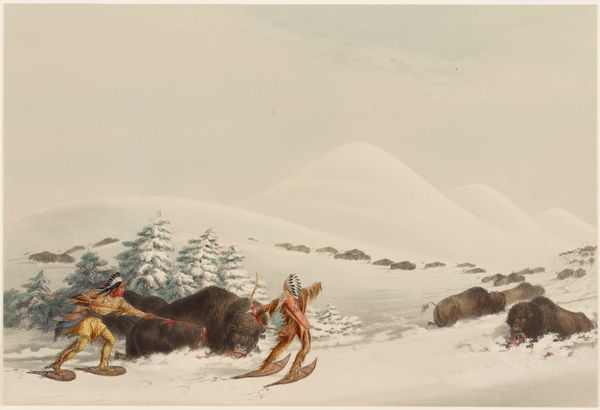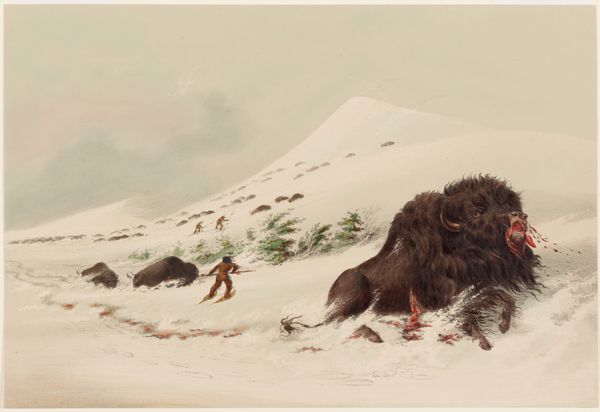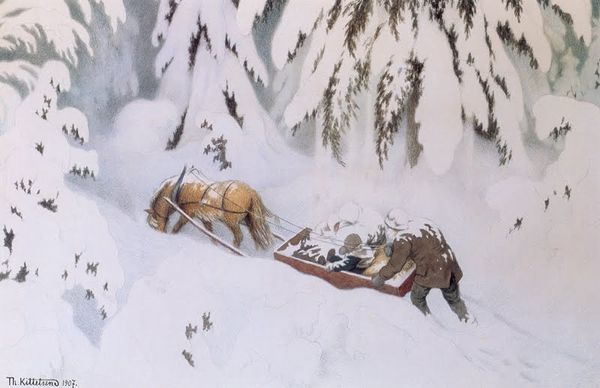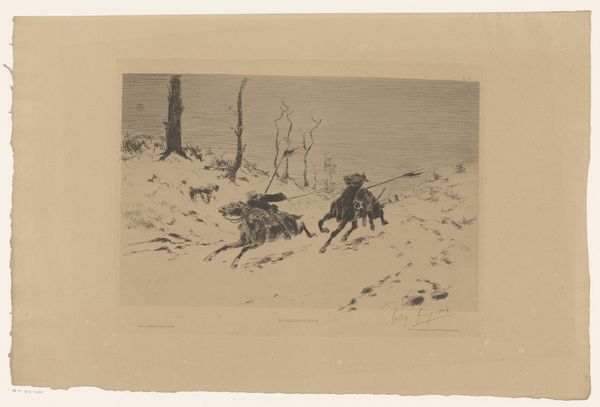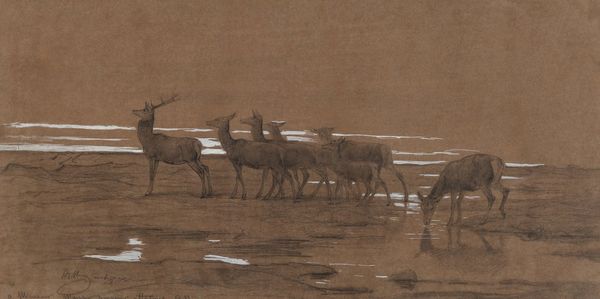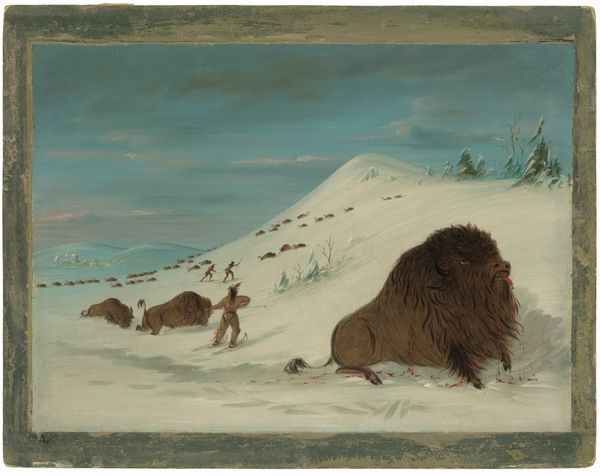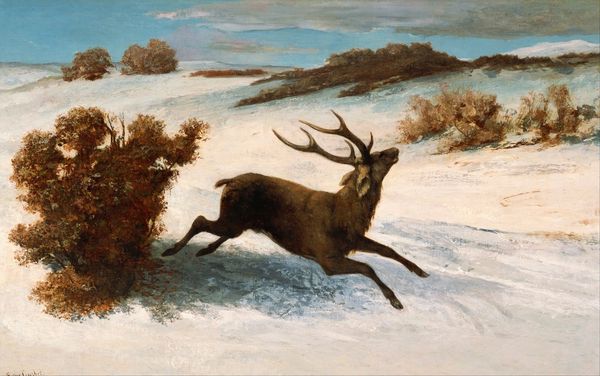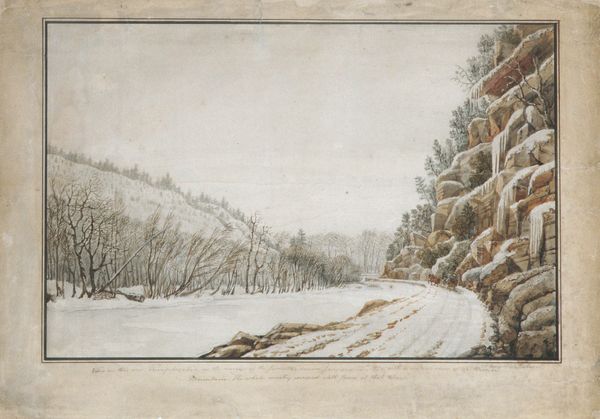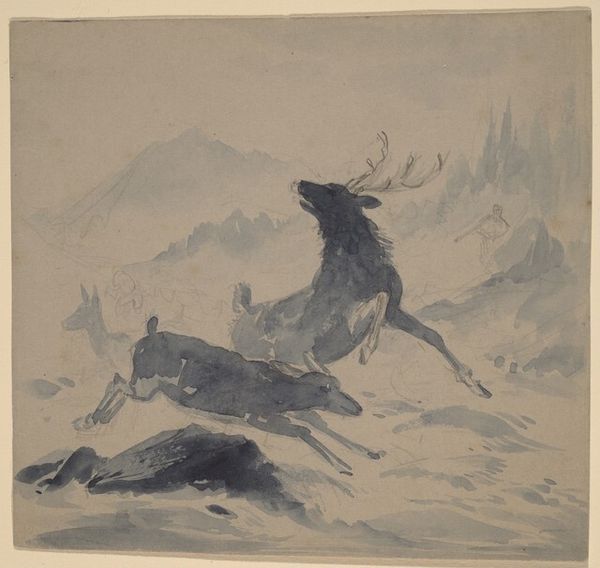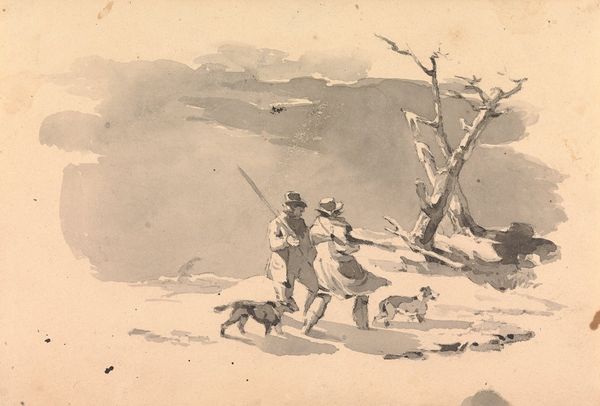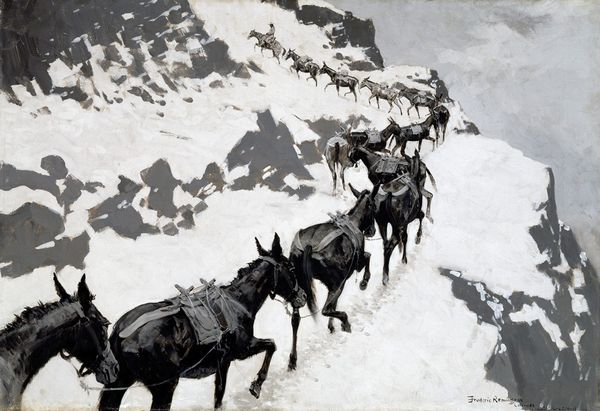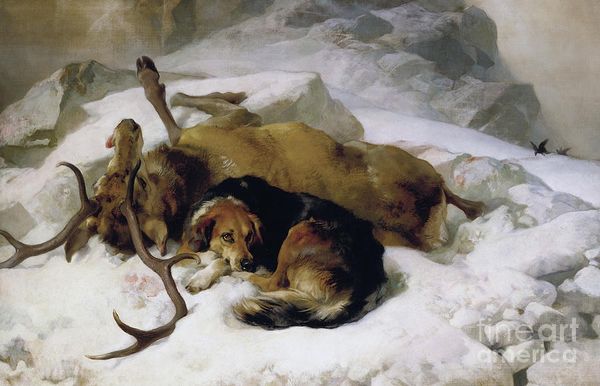
gouache
#
narrative-art
#
gouache
#
landscape
#
figuration
#
oil painting
#
romanticism
#
watercolour illustration
#
watercolor
Dimensions: 12 3/16 x 17 3/4 in. (30.96 x 45.09 cm) (image)12 15/16 x 18 1/2 in. (32.86 x 46.99 cm) (sheet)
Copyright: Public Domain
Curator: Let's consider "Buffalo Hunt," a watercolor completed by George Catlin around 1844, now held in the Minneapolis Institute of Art. Editor: Brrr, just looking at this makes me cold! The wash of white, that vast expanse of snow... it’s visually stark but tells a brutal story. Makes you wonder what it was like to live constantly on the edge, dependent on a successful hunt. Curator: Indeed. Catlin created this image amidst a broader project documenting Native American life and customs, largely shaped by his belief that these cultures were vanishing due to westward expansion. There’s a strong sense of Romanticism present—a fascination with untamed landscapes, idealized depictions of indigenous peoples, and anxieties surrounding societal change. Editor: Idealized, perhaps… but you can also feel the effort in it, right? The two figures at the front are almost cartoonish as they flounder and slide with their huge snowshoes. There's something awkward, a slight remove, about the representation—a disconnect between artist and subject, despite the vivid scene. Curator: Catlin undeniably possessed biases of his time. "Buffalo Hunt" offers a valuable record, but its authenticity has long been debated, reflecting how such images fueled narratives around the 'noble savage' that were advantageous to white colonial aspirations. These depictions, however well-intentioned, frequently glossed over the complexities of these indigenous communities. Editor: But aren’t all representations somewhat staged? Maybe the romance you see is also an appreciation— however filtered— of the sheer, epic scale of the land, the deep history embedded in the hunt, the harsh but beautiful necessity that links the figures, the snow, and the bison together. It all looks very hungry! Curator: That very hunger spurred displacement, erasure. Catlin presented these traditions with one foot firmly planted in the problematic cultural tropes that hastened the transformations he simultaneously seemed to lament. Editor: So, we circle back. Art always captures a collision of views and creates lasting echoes of culture change. “Buffalo Hunt” shows us this harsh beauty but is a stark warning and visual record, wrapped up in snowy, windswept silence. Curator: Precisely. Its power resides both in the visible narrative and in its function within the larger history of representation and power.
Comments
No comments
Be the first to comment and join the conversation on the ultimate creative platform.
